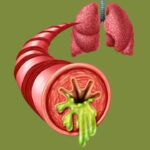Sexually transmitted diseases (STDs) are infections that spread from person to person primarily through sexual contact. Some of these diseases are incurable, posing significant health risks and challenges. In this article, we will explore these incurable STDs and discuss preventive measures to reduce the risk of transmission.
1. Major Incurable STDs
While many STDs can be treated, some remain incurable. Here are the key diseases that fall into this category:
1.1 HIV (Human Immunodeficiency Virus)
HIV is a virus that attacks the immune system, specifically targeting CD4 cells, which are crucial for fighting off infections. If left untreated, HIV can lead to AIDS (Acquired Immunodeficiency Syndrome), severely compromising the immune system.
– Transmission: HIV spreads through blood, sexual fluids, and from mother to child during pregnancy, childbirth, or breastfeeding.
– Symptoms: Initial symptoms may resemble a cold or flu, or there may be no symptoms at all. Advanced stages can cause severe health issues.
– Diagnosis: Blood tests are used to diagnose HIV.
– Treatment: Although there is no cure for HIV, antiretroviral therapy (ART) can control the virus, maintaining immune function and reducing the risk of transmission. This allows many individuals with HIV to live long, healthy lives.

Currently, there is no cure for HIV/AIDS.
1.2 Herpes Simplex Virus (HSV)
Herpes Simplex Virus is responsible for causing herpes infections. There are two main types: HSV-1, which typically causes oral herpes (cold sores around the mouth), and HSV-2, which usually causes genital herpes.
– Transmission: Herpes spreads through direct contact with the infected area, particularly through sexual contact or from mother to child during childbirth.
– Symptoms: Symptoms include blisters, itching, pain, and swelling in the affected area.
– Treatment: Antiviral medications like acyclovir can reduce symptoms and frequency of outbreaks, but the virus remains in the body indefinitely.
1.3 Human Papillomavirus (HPV)
HPV is a group of viruses that infect the skin and mucous membranes. Some types of HPV cause warts, while others can lead to cancers such as cervical, anal, and throat cancers.
– Transmission: HPV spreads through skin-to-skin contact, often during sexual activity.
– Symptoms: Many HPV infections are asymptomatic, but they can cause genital warts and, in severe cases, cancer.
– Treatment: While treatments can remove warts and manage symptoms, there is no cure for HPV itself. Vaccination is the most effective preventive measure, significantly reducing the risk of HPV-related diseases.
1.4 Hepatitis B (HBV)
Hepatitis B is a liver infection caused by the hepatitis B virus. It can lead to chronic liver disease, including cirrhosis and liver cancer.
– Transmission: HBV spreads through contact with infectious body fluids, including blood and sexual fluids, and from mother to child during childbirth.
– Symptoms: Early symptoms can be mild or absent, but severe infections can cause liver inflammation, jaundice, and liver failure.
– Diagnosis: Blood tests confirm HBV infection.
– Treatment: There is no cure for chronic hepatitis B, but antiviral medications can manage the disease. Vaccination is a key preventive measure.

Vaccination is the most effective way to prevent HBV transmission and reduce the risk of hepatitis B.
1.5 Syphilis
Syphilis is a bacterial infection caused by Treponema pallidum. It can lead to serious health complications if left untreated.
– Transmission: Syphilis spreads primarily through sexual contact and from mother to child during pregnancy.
– Symptoms: Symptoms vary by stage and include sores, rashes, and potentially severe damage to the brain, nerves, eyes, heart, liver, bones, and joints.
– Treatment: Early-stage syphilis can be cured with antibiotics, but untreated syphilis can cause irreversible damage.
2. Preventive Measures
Given the serious nature of incurable STDs like HIV, herpes, HPV, and hepatitis B, it’s crucial to take preventive measures to protect public health.
– Use Protection: Consistently using condoms during sexual activity significantly reduces the risk of STD transmission.
– Regular Health Check-ups: Routine screenings can detect STDs early, facilitating timely treatment and reducing the spread of infections.
– Limit Sexual Partners: Reducing the number of sexual partners lowers the risk of exposure to STDs.
– Educate and Raise Awareness: Increasing public knowledge about sexual health and STD prevention is vital. Support educational initiatives and share information to promote safe practices.
– Vaccination: Vaccines are available for HPV and hepatitis B. Early vaccination can protect against these infections and related complications.

Condoms not only prevent STDs but also ensure safety during intercourse.
In the face of incurable STDs, these preventive strategies not only safeguard individual health but also contribute to public health by curbing the spread of these infections. For more information or assistance regarding STDs, contact healthcare providers or organizations specializing in sexual health.
This overview highlights the importance of awareness and prevention in managing the risks associated with incurable STDs. Stay informed, practice safe behaviors, and support public health initiatives to protect yourself and your community.








